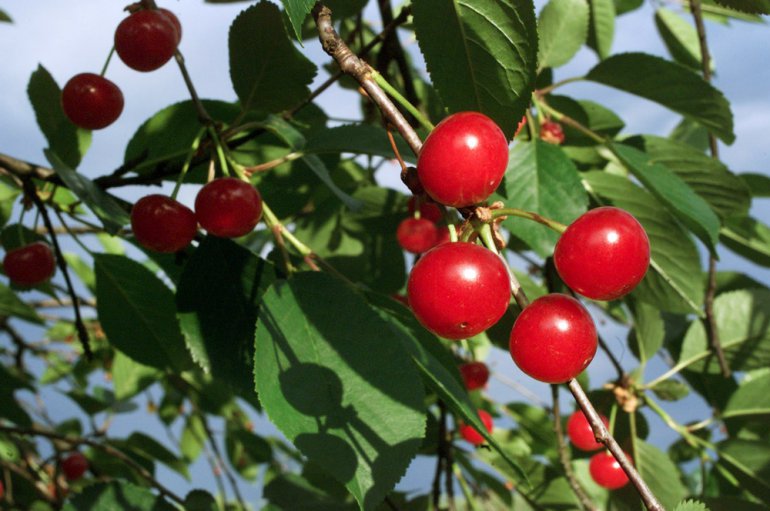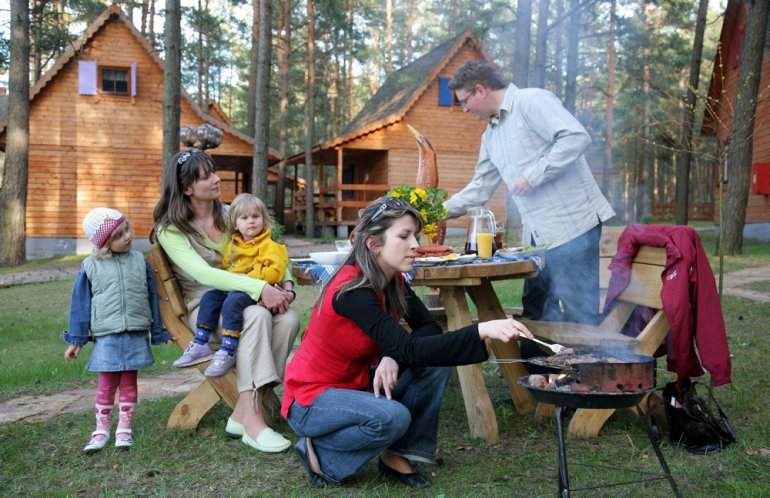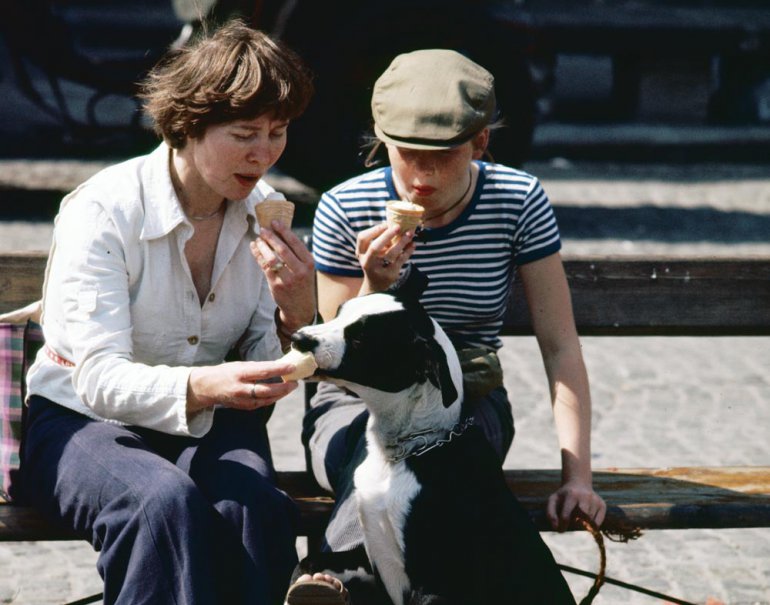8 Refreshing Ways to Keep Cool During the Polish Summer
The hearty, comforting dishes of Polish cuisine may seem like more of a winter option, but as the temperatures rise and the sun comes out, so do several refreshing summertime specialities. Fuschia soup, robust cherries, ruby raspberry syrup and crisp cucumber are only a few of the scrumptious summer treats we list for you below!
The Polish gazpacho
 Chłodnik, photo: Grażyna Makara
Chłodnik, photo: Grażyna Makara
Spain has its gazpacho, and the Balkans their tarator but nothing cools you down like this cold beet soup. The Polish chłodnik (which can be roughly translated as 'cooler') is rich in vitamins, and has a refreshingly vinegary taste. The recipe for this traditional soup goes back more than a century but has undergone some transformations over the years.
A recipe from a 19th-century cookbook by Wincenta Zawadzka listed the following ingredients: dill, cooked young beetroot leaves, broth and sour cream. A hard-boiled egg was added before serving, as well as finely chopped cucumbers and boiled lobster necks (alternately, pieces of fish or veal). Nowadays, the broth has been excluded, the sour cream is frequently exchanged for buttermilk or yoghurt, and the original lobster necks are more of a gourmet choice than a custom one.
The most classic version of this cold soup today is beautifully pink because of the young beetroots. For this reason, chłodnik is also known as cold borscht. In its modern form, it’s an easy no-cook soup that’s healthy, filling and delightfully refreshing.
Poland loves a good beer
 Beer, photo: East News
Beer, photo: East News
Poland is among the top ten beer producers in the world. It also has around 100 microbreweries run by a small core of dedicated enthusiasts who are collaborating to meet a growing demand for craft beers. It is not infrequent to now meet people who enjoy beer as if it was wine, sniffing, sipping and discussing the taste of different varieties.
Suprisingly, there's even a beer option for people who don't like beer. All over Poland, you can order a ‘beer with juice’, which is a beer mixed with sweet fruit syrup and served with a straw (preferably eco-friendly). The most common flavours are raspberry and ginger. It's a nice drink on a hot summer day,
During the communism regime, vodka was more frequently consumed than beer in Poland. The amber beverage rose in popularity after the transformation. During these socio-political changes, there was even a movement established called the Polish Beer-Lovers' Party (in Polish: Polska Partia Przyjaciół Piwa). It was a satirical political party, founded in 1990 by Janusz Rewiński.
Originally, the movement’s goal was to promote cultural beer-drinking in English-style pubs instead of the omnipresent vodka. It was an attempt at fighting alcoholism (with the culture of drinking beer, well...). Both the humourous name and the disillusionment with Poland's political transformation led some Poles to actually vote for the party. The party's appeal was reflected in the popular remark that maybe with the PPPP in power 'things sure won't be better but at least they’ll be funnier'.
And, even though it started as a prank, with time, the idea of a political discussion in establishments that served quality beer became a symbol of freedom of association and expression, intellectual tolerance, and a higher standard of living. PPPP members actually went on to develop a serious platform.
Gherkins as you never knew them
 Pickles, photo: Grażyna Makara
Pickles, photo: Grażyna Makara
Poland is known around the world for the dill pickles it exports in glass jars. But the local speciality you absolutely must try is an ogórek małosolny (a half-sour pickle). This Polish treat differs from regular pickles or gherkins because no vinegar is used in the process of its pickling.
Fresh cucumbers are immersed in brine, with various spices added to ensure more flavour and prevent by-products of the lacto-fermentation process. The cucumber is only pickled for a few days, so the result is less sour and much crunchier than those pickled for a longer time. It is a food that is both freshly grown and freshly soured! A must in the hot summer months, it’s perfect as a side dish with potatoes, meat, or great as a snack on its own.
If you'd like to make them on your own, be sure to choose small to medium-size fresh pickling cucumbers. After washing them, place them in a jar, add garlic cloves, fresh dill and some horseradish. You can also add allspice leaves, mustard seeds and pepper seeds. Made with one teaspoon of salt for every litre of water, pour the brine over the cucumbers so it fills up the jar.
Some argue that the brine should be cooled, while others say that it’s best to add it while it’s still hot. Some experts say to never use iodine salt for the pickle brine, choosing only black salt, or the Polish Kłodawa speciality salt. This ensures that the cucumbers stay firm and dark in colour and don’t go mouldy.
What's the difference between a cherry & a cherry?
 Cherries (wiśnie), photo: Maciej Jeziorek / Forum
Cherries (wiśnie), photo: Maciej Jeziorek / Forum
In Polish, there are two different words that translate into English as 'cherry'. The first one, wiśnia (vee-shnya) refers to a dark red, juicy and sour kind of cherry. It is also known as wild cherry, native to much of Europe and south-west Asia. It is much more acidic, dark, will stain your clothes, and leave a very tart aftertaste in your mouth. It also has greater nutritional benefits, and is said to even have greater medicinal effects. While eating a fresh wiśnia won’t suit everyone, the sour cherries alone are traditionally used for the sweet beverage known as kompot, as well as cherry pies, because they are so full of aroma and flavour. Poles are also fans of homemade alcohol made from the sour cherry, called nalewka.
The other one, the czereśnia (tche-resh-nya) is a bright red-and-yellowish, crispy and very sweet type of cherry. They are best eaten fresh, so it's definitely worth picking up a kilo or two at the market or your nearest fruit stall!
Get the kiełbasa!
 Grilling, Poland's favourite pastime, photo: Piotr Męcik / Forum
Grilling, Poland's favourite pastime, photo: Piotr Męcik / Forum
When the weather is beautiful, hot and sunny, no one feels like spending too much time in the kitchen with heat blasting from the oven! Grilling, of course, needs no introduction, but the custom of barbecuing is a relatively new trend in Poland. Even though our medieval hunting ancestors knew how good food tasted cooked over an open fire, it was only the tsunami of capitalism in the late 1990s that brought us this ‘Western’ tradition to Poland, and made grilling one of Poland's favourite pastimes.
 Grilling, photo: Michal Gmitruk / Forum
Grilling, photo: Michal Gmitruk / Forum
The custom was quickly adapted to suit Polish palates and initially the most popular item on the grill was kiełbasa. Nowadays, the list of must-haves includes potatoes (wrapped in aluminum foil), kaszanka sausage (a kind of blood sausage with grain), and pork shoulder steak (karkówka). Vegetable and meat skewers are also a classic, and so is trout, which gets seasoned and wrapped in aluminium foil before being tossed onto the grill. Now, of course, there are more and more vegan and vegetarian options available at Polish barbecues.
Gelato, anyone?
 Family eating ice cream, Warsaw, 1970, photo: Jerzy Michalski / Forum
Family eating ice cream, Warsaw, 1970, photo: Jerzy Michalski / Forum
While Italian ice may make you think of fruity sorbets, in Poland ‘Italian ice cream’ just means a creamy spiraling tower of soft-serve ice cream. The reason for this was simple: the first and most popular machines that served this kind of dessert in Poland had been produced in Italy. Today, Poland has become a true master of ice cream, and more and more parlors pop up each season. You'll find every flavour you can imagine!
When life gives you lemons
 Cytroneta, photo: East News
Cytroneta, photo: East News
Lemonade, or lemoniada in Polish, is served across cafés, bars and restaurants throught the summer. It is, after all, the perfect summer drink! The classic Polish version is made with sweetened flat or sparkling water with freshly squeezed lemon, lime, or orange juice, as well as the grated rind of the fruit. Served cooled or with ice, it often comes with aromatic mint leaves on top.
Cytroneta, a somewhat different lemon drink, was very popular in the 1970s and up to the early 1990s, was served in 0,33 litre glass bottles. A non-carbonated version of the drink came out a decade later, and this non-carbonated variety was sold in plastic baggies, accompanied by a straw, which would be used to break the packaging and start sipping.
Have a great summer! Miłego lata!
[{"nid":"5688","uuid":"6aa9e079-0240-4dcb-9929-0d1cf55e03a5","type":"article","langcode":"en","field_event_date":"","title":"Challenges for Polish Prose in the Nineties","field_introduction":"Content: Depict the world, oneself and the form | The Mimetic Challenge: seeking the truth, destroying and creating myths | Seeking the Truth about the World | Destruction of the Heroic Emigrant Myth | Destruction of the Polish Patriot Myth | Destruction of the Flawless Democracy Myth | Creation of Myths | Biographical challenge | Challenges of genre | Summary\r\n","field_summary":"Content: Depict the world, oneself and the form | The Mimetic Challenge: seeking the truth, destroying and creating myths | Seeking the Truth about the World | Destruction of the Heroic Emigrant Myth | Destruction of the Polish Patriot Myth | Destruction of the Flawless Democracy Myth | Creation of Myths | Biographical challenge | Challenges of genre | Summary","topics_data":"a:2:{i:0;a:3:{s:3:\u0022tid\u0022;s:5:\u002259609\u0022;s:4:\u0022name\u0022;s:26:\u0022#language \u0026amp; literature\u0022;s:4:\u0022path\u0022;a:2:{s:5:\u0022alias\u0022;s:27:\u0022\/topics\/language-literature\u0022;s:8:\u0022langcode\u0022;s:2:\u0022en\u0022;}}i:1;a:3:{s:3:\u0022tid\u0022;s:5:\u002259644\u0022;s:4:\u0022name\u0022;s:8:\u0022#culture\u0022;s:4:\u0022path\u0022;a:2:{s:5:\u0022alias\u0022;s:14:\u0022\/topic\/culture\u0022;s:8:\u0022langcode\u0022;s:2:\u0022en\u0022;}}}","field_cover_display":"default","image_title":"","image_alt":"","image_360_auto":"\/sites\/default\/files\/styles\/360_auto\/public\/2018-04\/jozef_mroszczak_forum.jpg?itok=ZsoNNVXJ","image_260_auto":"\/sites\/default\/files\/styles\/260_auto_cover\/public\/2018-04\/jozef_mroszczak_forum.jpg?itok=pLlgriOu","image_560_auto":"\/sites\/default\/files\/styles\/560_auto\/public\/2018-04\/jozef_mroszczak_forum.jpg?itok=0n3ZgoL3","image_860_auto":"\/sites\/default\/files\/styles\/860_auto\/public\/2018-04\/jozef_mroszczak_forum.jpg?itok=ELffe8-z","image_1160_auto":"\/sites\/default\/files\/styles\/1160_auto\/public\/2018-04\/jozef_mroszczak_forum.jpg?itok=XazO3DM5","field_video_media":"","field_media_video_file":"","field_media_video_embed":"","field_gallery_pictures":"","field_duration":"","cover_height":"991","cover_width":"1000","cover_ratio_percent":"99.1","path":"en\/node\/5688","path_node":"\/en\/node\/5688"}]